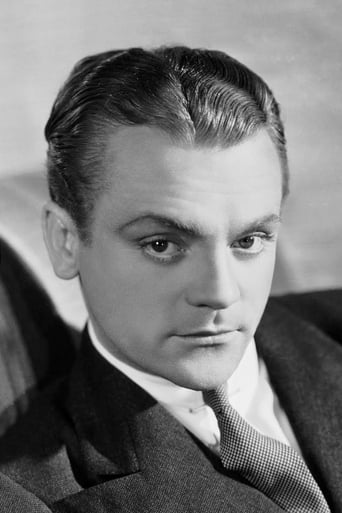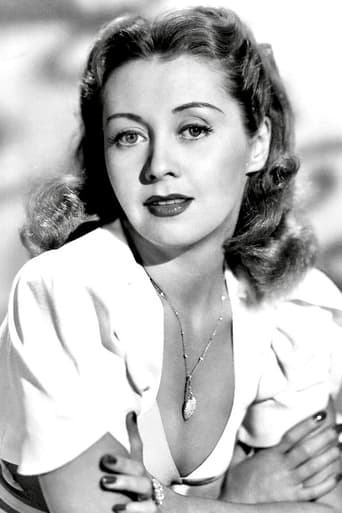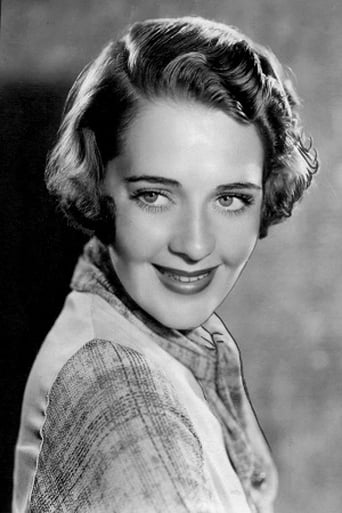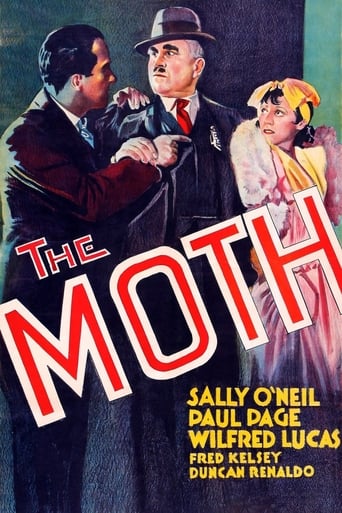Footlight Parade (1933)
A fledgling producer finds himself at odds with his workers, financiers and his greedy ex-wife when he tries to produce live musicals for movie-going audiences.
Watch Trailer
Cast


Similar titles
Reviews
Great showstoppers. Jimmy hoofing it up a storm, nine years before his boffo "Yankee Doodle Dandy". Ruby Keeler always excellent; superb. Joan Blondell -- spoiler -- gets Jimmy in the end, after she kicks his cheap trashy gold-digger, literally, to the curb, lol. Hugh Herbert with the famous hand-twirling -- always a delight. Jimmy's friend Frank McHugh terribly whiny as the dance director, and his wearing that huge cat's tail is totally hilarious. Cat number just divine, so is waterfall number. Honeymoon number full of pre-code innuendoes, but of course there is the justice of the peace just off the lobby. Berkeley always excellent, plus he is one of the cast. Look for him. 12/10
Not so much a musical as a mating call set to music. But then what else could be expected from three back-to-back production numbers from that carnally-obsessed choreographer Busby Berkeley. "Beside the Waterfall" alone has enough 'flowering o's', half-dressed chorines, and suggestive camera angles to make Hugh Hefner blush and send Dr. Freud into terminal overload. Then too, who else but the mad Mr. Berkeley could convert the complicated matter of sex into a mere conjugation of overhead geometry. There's also "Honeymoon Hotel", a celebration of the no-tell motel, with marching phalanxes of hormonally driven couples all named Smith, and led by a demonic cupid looking like an early Billy Barty. The sight of his tiny legs chasing after a fleeing Amazon is enough to drive Harpo Marx to distraction and cause the audience to doubt the laws of physics. While bringing down the curtain is the marching madness of "Shanghai Lil", where Berkeley proves-- in case you ever doubted-- that race, creed, and bad make-up make no difference to a Chinese bordello. It's sort of an early gathering of the UN, where people from all over come together to discuss the world's number one topic. All in all, there's enough sheer pizzaz, flash, and animal energy in these numbers to light up a thousand dark movie houses.Sure, Warner Bros. tries to cover the orgy with the fig leaf of two cheerful innocents played by a sappy Dick Powell and a virginal Ruby Keeler. But it doesn't work, because everyone else gets in on the fun, including that human buzz-saw Jimmy Cagney and everyone's favorite sassy dame Joan Blondell. Director Lloyd Bacon proves too he knows what to do, giving us an eyeful of Blondell endlessly rolling and unrolling her hosiery, while the writers pepper the conversation with suggestive one-liners. Yeah, it's a great movie-- good enough to help bring down the heavy hand of censorship the following year, and put an end to damp dreams like "Beside a Waterfall". But not even the Watchdogs of Public Morality could stop Berkeley's deliriously suggestive pageantry that would live on at even that most repressed of studios, MGM. Sure, Astaire-Rogers may have been more graceful and a whole lot more chaste, no doubt producing more sheer polish-- still and all, don't let this unabashedly pagan celebration pass you by. As they say around the owl cage, it's a real hoot.
Forget the plot. It's a kind of re-run of "42nd Street" with Cagney dashing around trying to put a show together in the face of nearly insurmountable obstacles. A couple of women keep insulting each other because they want to marry him, or clean his clock while divorcing him. Every movement is made at the speed of light. He discovers his new star -- Ruby Keeler -- when he spots his devoted and wholly instrumental secretary without her glasses. The numbers were staged by Busby Berkeley. And what numbers! The first, "At the Honeymoon Hotel" is a kind of sketch of Dick Powell and Ruby Keeler checking into a hotel where everyone's name seems to be Smith and trying to consummate their marriage despite numerous interruptions by family, strangers, and a demented midget. The vocals are done in Sprechgesang. I never realized so many words rhymed with "hotel." They even work in "New Rochelle." It's all pretty suggestive.It was during the second number, "By A Waterfall," that I realized how deeply in love with Ruby Keeler I was. Oh, sure, she can't sing and she can't act, and when she's dancing with those hoof-like feet she seems to be stomping a scurrying horde of roaches -- but she can't sing, can't act, and can't dance, so EARNESTLY. She's so awesomely winsome. Any normal man would want to rush up to her and hug her -- before she gets too sweaty -- and whisper reassuring things to her like, "Don't worry, Darling, talent isn't all it's cracked up to be." About this number. You have to be prepared for it. What I mean is, don't do any psychedelic substances before you watch it. It's performed entirely in the water, sometimes under it, a kind of pro-dromal symptom that would be followed ten years later by a full-blown Esther Williams attack.Several dozen young ladies are dressed in tight skimpy costumes, diving around, doing synchronized swimming, betimes shot from overhead, sometimes forming a pair of writhing snakes that then morph without a lot of to-do into an ovocyte being penetrated by a snake with a big head before, thrillingly, joyously, all the swimmers coalesce into a blastocyte with a big smile on it. As a finale, they held up coordinated placards that, taken together, became a remarkably nuanced portrait of Cedric the Entertainer. I found the rich use of impasto compelling. Or was it all in my mind? I think that was before the swimming girls formed the chrysanthemum, or maybe it was after. One of the shots is truly memorable in its own filthy way. It's done from underwater with the camera aimed straight up between a dozen spread thighs with Ruby Keeler swimming between them and trying to smile at the lens. She also tries to smile -- and to keep from blinking -- while a Niagara of water cascades onto her tiny head and shoulders. I had to pop my ears after seeing it.The ultimate number is a patriotic and thoroughly tawdry sketch of Jimmy Cagney as a sailor in a Chinese whorehouse "lookin' for my Shanghai Lil." It violates every code in the book -- prostitution, drunkenness, opium, bar room brawls -- only to pull itself together at the end and allow Cagney to smuggle Keeler aboard a battleship dressed in a sailor suit. Her Siniticized version of English is endearing. "Me love you long time!" No -- wait. Well, I told you I was confused.
At the beginning of the movie there's a theater marquee from Hollywood Pictures that announces 'Silent Pictures are Finished'. With that concept being dealt with in real time, Warner Brothers casts it's rising star Jimmy Cagney as a go-getter, a producer of stage shows who has to quickly readjust to the new reality of moving pictures in order to make a buck. He decides on creating 'prologues', live musical numbers to complement what theater fans are about to see on the big screen.The set up for the large scale Busby Berkely production numbers takes up the first half of the story, as Cagney's character Chester Kent labors to come up with original ideas only to have them stolen and used by the competition. Pulling out all the stops for a major investor, Kent ushers his troupers from theater to theater to present his latest ideas before his rival has a chance to learn about them. The trio of Berkeley numbers are truly extravaganzas, with a lavish flair that would be hard to emulate even today. Presumably each production is meant to outdo the one before, so I probably go against consensus here by choosing the Waterfall sequence as my favorite, the middle prologue of the three. Cagney himself gets to hoof it in the third number, Shanghai Lil, with Ruby Keeler as an Oriental geisha. The production has an interesting international flavor with characters representing various ethnicities, something you probably wouldn't expect three decades prior to the Civil Rights era.Cagney film fans will enjoy his team up once again with Warner contract players Joan Blondell and Frank McHugh. Blondell was married to cinematographer George Barnes when the picture was being made; two years later she would divorce him and marry the picture's other headliner, Dick Powell. This was my first look at Ruby Keeler, and I can't say I was all that impressed with her performance. Nor Powell's for that matter, even though the movie-going public fell in love with them in Berkeley's first musical for Warner's, "42nd Street", soon followed by "Gold Diggers of 1933". I haven't seen those yet, so I don't want to be too critical here.Contrary to what one might think, Cagney himself preferred his musical films to the gangster flicks that captured the imagination of his many fans. For a long time, "Footlight Parade" was his favorite, although by the time author Doug Warren interviewed him for the biography "Cagney" published in 1983, he was quoted as saying "It was a dog". I'd say he was being a little hard on himself.










